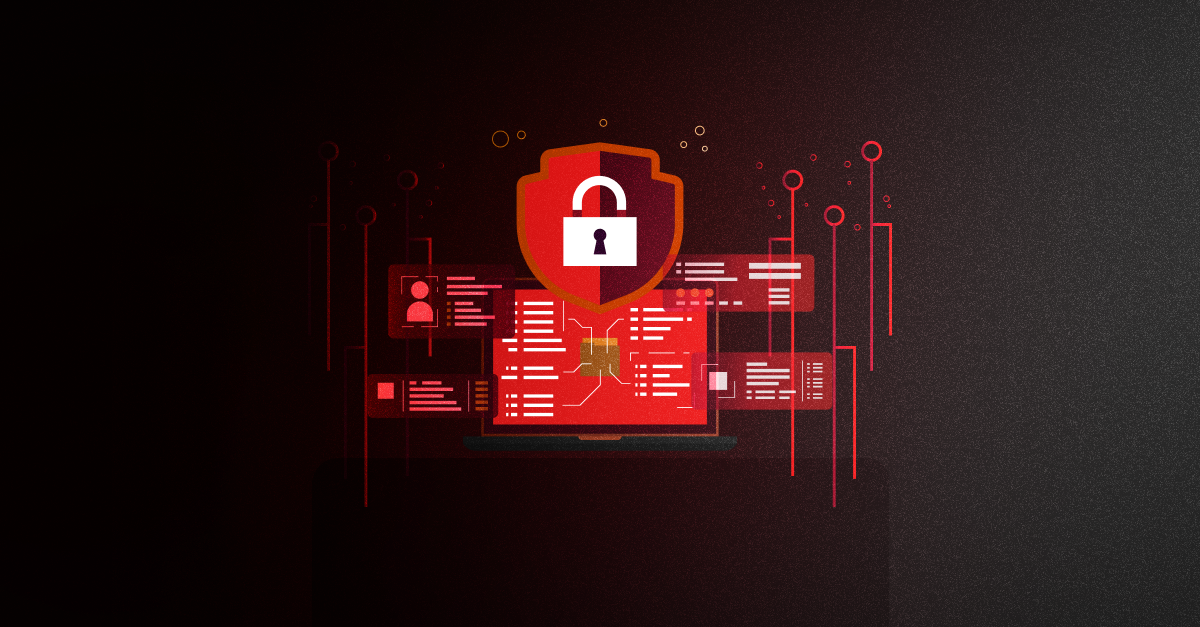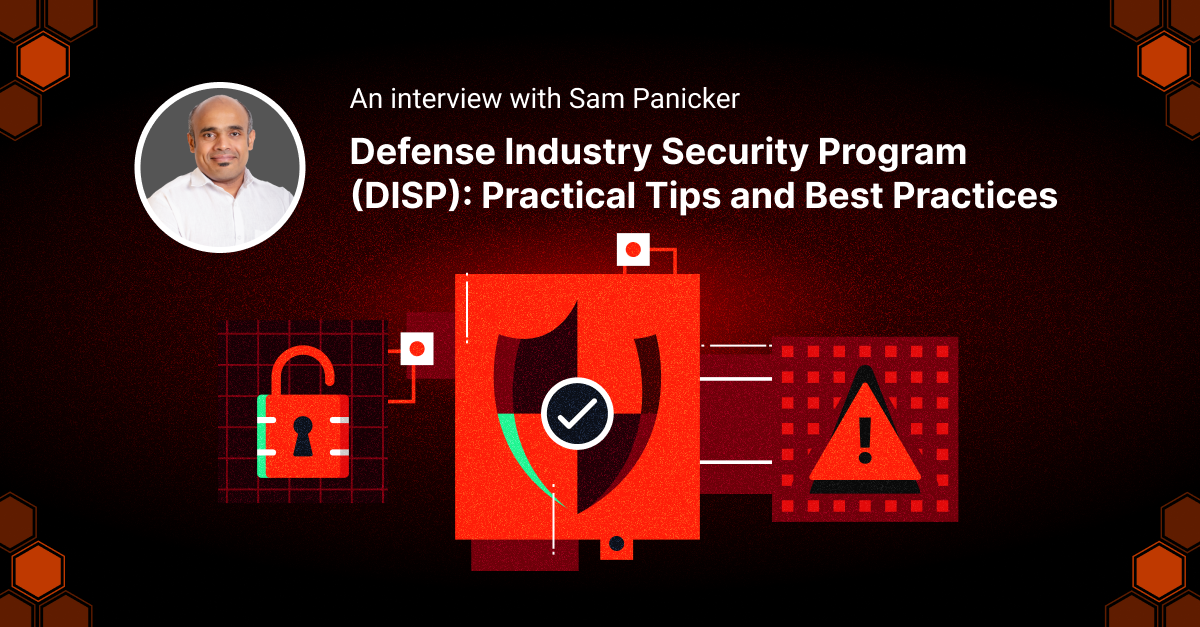A Guide to Endpoint Detection and Response (EDR)
In an enterprise network, an endpoint is any device that occupies one end of a communication channel. This may include:
- Desktop computers
- Laptops
- Printers
- Servers
- Mobile phones
- IoT devices
- WiFi access points
Simply put, if a device is connected to a network, it is an endpoint.
Endpoint security is concerned with protecting these endpoints from malware, ransomware, phishing attacks, zero-day attacks, and other threats. Over the years, it has evolved from traditional antivirus software to now include firewall services, web filtering, and email filtering. Yet even with all of these important components, one of the most vital components of endpoint security today is Endpoint Detection and Response (EDR).
What Is Endpoint Detection and Response?
In 2013, Gartner’s Anton Chuvakin suggested the term Endpoint Threat Detection & Response (ETDR) to describe the “tools primarily focused on detecting and investigating suspicious activities (and traces of such) other problems on hosts/endpoints.” ETDR eventually became EDR.
HOW DOES EDR WORK?
An EDR solution provides holistic, continuous, and real-time visibility into endpoint activity. EDR solutions do this by recording the activities and events across all endpoints and workloads so that security teams can use this information to unearth attacks that would otherwise go undetected.
What are the Benefits of Endpoint Detection and Response?
Endpoint Detection and Response is one of the two critical pieces of the endpoint security puzzle – the other being an Endpoint Protection Platform or EPP. Often, EPP and EDR are combined to create an integrated, multi-layered approach to endpoint security. An EPP solution goes beyond the limited capabilities of antivirus tools to offer better protection, even against advanced threats. However, while it can identify vulnerabilities and prevent attacks, it cannot take action if active threats have already moved past endpoints. This is where an EDR solution can be a valuable addition to an endpoint security program.
EDR expands EPP support by collecting and analyzing data from network endpoints to actively neutralize attacks. Instead of reactive, detection-based cyber defence, EDR proactively identifies and removes threats, and prevents them from causing too much damage. It also remediates endpoints to pre-infection state. Once an attack is stopped, the EDR can be used to trace its source and prevent similar attacks from recurring.
With real-time continuous monitoring, endpoint data analytics, and rule-based automated response, an EDR can stop an attack at the earliest signs of detection, and often before the human security personnel even realize the threat exists.
WHAT SHOULD YOU LOOK FOR IN AN EDR SOLUTION?
The following characteristics are must-haves when it comes to a good EDR solution:
- Provide continuous and comprehensive visibility into real-time endpoint activity
- Advanced threat detection, investigation, and response capabilities
- Incident data search
- Investigation alert triage
- Suspicious activity validation
- Threat Hunting
- Malicious activity detection and containment
KEY COMPONENTS OF EDR SECURITY
There are three key elements to EDR tools:
- Software agents that perform endpoint monitoring and gather data (processes, volume of activity, connections, etc) into a central database
- Automated responses using pre-configured rules, when incoming data reveals a certain type of attack. Examples of such responses can be to alert an employee or log off the end user
- Real-time analytics for rapid diagnosis of threats and forensics tools for investigating attacks and threat hunting
Additionally, EDR solutions also include the following components:
- Data loss prevention
- Proactive web security for a safe browsing experience
- Insider threat protection
- Encryption of endpoint, emails, and disks to prevent data exfiltration
- Integrated firewall to block out malicious network attacks
EDR Use and Capabilities
Endpoint Detection and Response tools:
- Monitor and collect activity data from endpoints
- Analyze this data to identify vulnerabilities and threats
- Automatically respond to threats to remove or contain them
- Notify security personnel about the threat and its removal
- Trace threat source to prevent recurrence
As EDR tools monitor endpoints and network events, they record this information in a central database, where the data is then analyzed, investigated and reported on. They also identify internal threats and external attacks, and respond to them automatically to minimize their damaging impact.
Endpoint Data Collection Agents
A software agent installed on host systems enables Endpoint Detection and Response tools to monitor endpoints and collect data about them, such as running processes, data transfers, logs, configurations, files, activity volumes and connections. It then places this data into a centralized threat database. This information can be contextually enriched to help security teams identify irregularities or anomalous trends that may indicate signs of an attack.
Data Analytics and Threat Hunting
An EDR tool may provide both real-time analytics and forensics tools. The analytics engine searches for patterns, and enables fast analysis of threats that may not fit the software’s pre-configured rules. Forensics tools are ideal for establishing timelines and analyzing the source of an attack that has already happened. They provide a combination of current situational data and historical data to guide the actions of security teams, and help prevent recurrence. They also enable security personnel to hunt for threats (e.g. malware) that may be lurking undetected on endpoints.
Real-time Visibility
Endpoint Detection and Response tools provide real-time, full-spectrum endpoint visibility so security teams can view the activities of bad actors as they attempt to breach the endpoint, and take action to stop them immediately.
Behavioral Protection
Effective EDR tools (such as Evolve’s
SIEM and EDR tools) adopt a behavioural approach, carefully monitoring typical user activities in order to search for Indicators of Attack (IOA). Anomalous activity is then flagged before a compromise or breach.
Automated Incident Response and Remediation
EDR provides rule-based automated response to any detected threat. These pre-configured rules recognize when incoming data indicates a threat, and trigger an automatic response to mitigate or deflect it. The response could be to send an automatic alert to a security administrator or log the suspected user off of the network.
Incident Triage
An EDR solution can automatically triage and validate potentially suspicious events. This enables security teams to prioritize investigations and focus their efforts on the incidents or threats that truly matter, saving valuable time and resources in the prevention of chasing false flags. It also reduces “alert fatigue,” which will help both the morale and longevity of your employees!
Threat Intelligence
Integrated
threat intelligence
capabilities provide additional context and details about current threats and adversaries, and their characteristics. This strengthens the EDR’s ability to identify, respond to, and neutralize attacks.
THE NEED FOR ENDPOINT SECURITY
Endpoint security forms a crucial part of the modern-day cybersecurity management program.
But why do you need to secure your endpoints?
Endpoint attacks happen to be one of the prevalent forms of attack today. A study by the Ponemon Institute found that 68% of organizations suffered one or more endpoint attacks that successfully compromised their data and/or IT infrastructure.
The weakest links in your business network are your endpoints. Endpoint devices are how negligent employees or malicious attackers can access your network. This makes endpoint security absolutely critical for the safety of your organization.
Here are some more reasons why endpoint security is important:
- Data
- In today’s business environment, data is a company’s most valuable asset, the loss of which could bring business to a standstill.
- Number of endpoints - Mobile technology combined with BYOD and remote work policies have led to a growing number of endpoints and various types of them. This opens up many new opportunities for hackers.
- Complicated threat landscape - Threats and attacks are becoming increasingly sophisticated and hard to detect. Hackers are always working on new and improved methods to breach company networks.
Moreover, EDR solutions help you gain increased visibility into your IT environment with contextualized information. This significantly reduces the burden on the IT team and also helps in addressing blind spots and dormant threats.
NEW FEATURES AND CAPABILITIES THAT CAN ENHANCE EDR SOLUTIONS
THIRD-PARTY INTELLIGENCE SERVICES
Third-party intelligence services can significantly increase an EDR solution’s effectiveness.
Threat intelligence services provide organizations with a large database of all the current threats and their attributes which improves the detection of exploits, particularly multi-layered and zero-day attacks.
AI & MACHINE LEARNING
Certain EDR solutions utilize AI and ML to automate steps in the investigative process. These capabilities can also be used to learn the usual behaviors of an organization and use this information combined with threat intelligence to analyze new data.
ADVERSIAL TACTICS, TECHNIQUES, AND COMMON KNOWLEDGE (ATT&CK)
MITRE ATT&CK is a framework and knowledge base that is built on extensive studies of numerous real-world cyberattacks. This collective threat intelligence helps in identifying patterns and traits that are constant across different types of exploits. These common behaviors can then be used by EDR solutions to effectively identify risks that could have been altered in other ways.
These new technologies for automated analysis and response can help IT teams battle with today’s complex and diverse threats.
NEW TYPES OF ENDPOINTS AND ENPOINT ATTACKS
Any device that is connected to a network is an endpoint. Today, many new endpoints have emerged as a result of technological advancements such as IoT (Internet of Things), and BYOD (Bring Your Own Device). Some of these new entry points include:
- Remote devices
- Wearable devices like smart watches
- Mobile devices
- Smart systems
- IoT-enabled devices
- Sensors
- Cloud-based servers and apps
- Next-generation POS (Point of Sale) devices with mobile and/or cashless payment capabilities
Endpoint security solutions have had to adapt and evolve with the dramatic increase in endpoints and their changing nature.
NEXT-GENERATION ENDPOINT SECURITY
To improve endpoint security, next-generation, automated systems that assess every process on every device for malicious activity are now required. These modern security solutions leverage AI and Machine Learning to provide more robust, and agile security compared to traditional solutions.
Additional capabilities include:
- Continuous monitoring to mitigate threats
- Preventing suspicious activity from being executed
- Analyzing suspicious files in isolated spaces called sandboxes
- Restoring endpoints and data to the previous state during a ransomware attack
- Filtering out suspicious endpoints and processes
- Preventing unauthorized data movement
- Proactive learning from threats and continuous adaptation to combat them
the evolution of edr into xdr
EDR is predictive security that helps to identify sophisticated cyberattacks and unseen malware that can bypass traditional security systems. Typical EDR solutions combine cyber threat intelligence with behavioral analytics and machine learning techniques to analyze data across multiple endpoints and detect threats over time.
XDR
, or Extended Detection and Response on the other hand, is a more refined, comprehensive and multi-platform approach to endpoint security. In addition to endpoints, XDR extends the scope of detection and studies data from networks, cloud workloads, servers, SIEM, and more. This helps you get a clear, and broad view across multiple tools and attack vectors.
MANAGED ENDPOINT DETECTION AND RESPONSE
Managed Endpoint Detection and Response (EDR) services offer organizations the advantage of outsourcing their EDR capabilities to experienced cybersecurity providers. Partnering with a managed EDR service allows your business to utlizie the expertise and resources of professionals dedicated to monitoring, detecting, and responding to threats across their endpoints.
Managed EDR services provide continuous monitoring of endpoints, proactive threat hunting, and real-time incident response. Security teams are equipped with advanced EDR tools and technologies, along with the necessary expertise to effectively analyze and mitigate potential threats.
Evolve’s On-demand SIEM and EDR Capabilities with Unlimited Agents
- Expertise and Support: Managed EDR services bring in highly skilled security professionals who possess in-depth knowledge of the latest threats, attack techniques, and mitigation strategies. They provide round-the-clock monitoring and support to rapidly respond to any security incidents.
- Enhanced Threat Detection: Managed EDR services utilize advanced analytics and machine learning algorithms to detect and identify malicious activities and indicators of compromise across endpoints. These sophisticated detection capabilities increase the chances of detecting sophisticated and evasive threats that might go unnoticed with traditional security measures.
- Incident Response and Remediation: With managed EDR, organizations gain access to a dedicated incident response team. These experts can investigate and respond to security incidents promptly, minimizing the potential impact and facilitating faster recovery. They can also assist with remediation strategies and provide recommendations to improve overall security posture.
- Scalability and Flexibility: Managed EDR services can easily scale to accommodate the changing needs and growth of an organization. Whether there is an expansion in the number of endpoints or the addition of new locations, managed EDR providers can adapt and ensure consistent coverage.
- Cost-Effectiveness: Outsourcing EDR capabilities to a managed service provider can be cost-effective compared to building an in-house team and infrastructure. Organizations can leverage the provider's existing infrastructure, tools, and expertise, avoiding the need for extensive investments in technology and training.
EDR FOR CLOUD ENVIRONMENTS
As organizations increasingly adopt cloud-based infrastructure and services, securing endpoints within these environments becomes paramount. EDR for cloud environments extends the capabilities of traditional endpoint security solutions to protect cloud-based endpoints, such as virtual machines (VMs) and containers.
Cloud-based EDR solutions offer several key features tailored to the unique challenges of securing endpoints in cloud environments:
- Visibility and Monitoring: EDR solutions designed for the cloud provide comprehensive visibility into cloud-based endpoints. They monitor the activities, communications, and configurations of VMs and containers, detecting any suspicious or anomalous behavior.
- Threat Detection and Response: Cloud EDR solutions leverage behavioral analytics, machine learning, and threat intelligence to detect and respond to advanced threats targeting cloud-based endpoints. They can identify indicators of compromise (IOCs) and indicators of attack (IOAs) specific to cloud infrastructure, enabling swift incident response.
- Integration with Cloud Security Platforms: Cloud EDR solutions often integrate with cloud security platforms, allowing for seamless collaboration and unified management. Integration with cloud-native security services and tools enhances threat detection and enables efficient security operations.
- Compliance and Governance: EDR for cloud environments helps organizations meet regulatory compliance requirements by monitoring and securing cloud-based endpoints. It provides visibility into security events, assists with audit trails, and supports incident response processes.
EDR FOR IoT DEVICES
EDR solutions generate a wealth of data and insights regarding endpoint activities, threat detections, and incident response. EDR metrics and reporting allow organizations to track the effectiveness of their security measures, identify trends, and make informed decisions to enhance their overall security posture.
Key metrics and reporting capabilities in EDR include:
- Threat Detection Metrics: Organizations can measure the number of detected threats, including the breakdown of known threats versus unknown threats. This metric helps assess the efficiency of threat detection capabilities and identify potential areas for improvement.
- Time to Detection and Response: EDR metrics provide insights into the average time taken to detect and respond to security incidents. Monitoring these metrics helps organizations gauge their incident response efficiency and identify ways to reduce the time between detection and remediation.
- Incident Analysis and Root Cause Identification: EDR reporting enables detailed analysis of security incidents, including the root cause, attack vectors, and affected endpoints. This information helps organizations understand the nature of attacks and implement necessary controls to prevent future incidents.
- Compliance and Audit Reports: EDR solutions offer reporting capabilities that assist in meeting regulatory compliance requirements. Organizations can generate reports showcasing security events, incident response activities, and adherence to industry-specific compliance standards.
EDR COMPLIANCE AND REGULATIONS
EDR solutions play a vital role in helping organizations achieve and maintain compliance with relevant regulations, such as the General Data Protection Regulation (GDPR), Health Insurance Portability and Accountability Act (HIPAA), and Payment Card Industry Data Security Standard (PCI DSS).
Key features of EDR solutions for compliance include:
- Event Logging and Retention: EDR solutions capture and store endpoint activity logs, including security events and incidents. These logs serve as essential evidence for compliance audits and investigations.
- Incident Response Documentation: EDR solutions facilitate incident response documentation, ensuring that organizations maintain detailed records of security incidents, actions taken, and their outcomes. This documentation aids compliance audits and demonstrates adherence to incident response protocols.
- Compliance Reporting: EDR solutions provide reporting capabilities to generate compliance-specific reports. These reports showcase security controls, incident response procedures, and adherence to regulatory requirements, enabling organizations to demonstrate compliance to auditors and regulators.
- Continuous Monitoring and Auditing: EDR solutions support continuous monitoring and auditing of endpoints to detect potential compliance violations or policy deviations. Automated auditing capabilities help organizations identify non-compliant activities and promptly address them.
EDR INTEGRATION WITH SOAR
Security Orchestration, Automation, and Response (SOAR) platforms enhance the capabilities of EDR solutions by automating and orchestrating incident response processes. Integration between EDR and SOAR platforms streamlines workflows, accelerates response times, and enables efficient collaboration across security teams.
Benefits of EDR integration with SOAR platforms:
- Automated Incident Response: EDR alerts can trigger automated response actions through the SOAR platform. This reduces manual effort and response times by automatically executing predefined actions based on incident characteristics.
- Workflow Orchestration: SOAR platforms facilitate the orchestration of complex incident response workflows. EDR integration enables seamless coordination between EDR tools, other security solutions, and human analysts, ensuring a synchronized and efficient response.
- Enriched Threat Context: EDR-SOAR integration allows the enrichment of threat data with contextual information from external sources. This enhances incident analysis and decision-making by providing comprehensive visibility into threats, indicators, and affected assets.
- Playbook Creation and Optimization: SOAR platforms enable the creation of incident response playbooks that integrate EDR workflows. Playbooks define step-by-step procedures, automate repetitive tasks, and guide analysts through the incident response process.
- Metrics and Reporting: Integrated EDR and SOAR platforms provide consolidated metrics and reporting capabilities. This allows organizations to measure the efficiency and effectiveness of their incident response processes, identify bottlenecks, and continuously optimize their security operations.
-
Conclusion
Endpoints have increasingly become common entry points for malicious actors. That’s why it’s important to continuously monitor them and catch threats and attacks before they spread. Endpoint Detection and Response provides the means to do so, with improved endpoint visibility, contextualized threat hunting, rapid threat investigations, and automated remediation. All in all, EDR is one of the best investments modern organizations can make.





